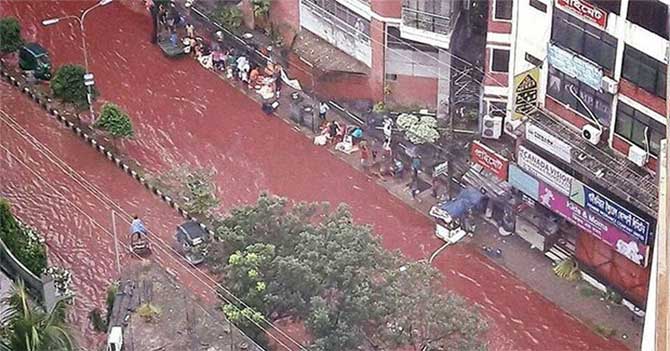One of the most unusual natural phenomena of the last decade occurred in Kerala, India, in July 2011, when red rain began falling from the sky. Known as the “blood rain,” the phenomenon caused panic and surprise among locals. The rain fell in the morning and afternoon, turning streets, buildings, and people’s clothes red, resembling blood.

Many Indians considered the phenomenon a bad omen or a divine warning. Some even linked it to environmental disasters or extraterrestrial phenomena. Kerala authorities and scientists responded quickly to the phenomenon, collecting samples of the red rain for analysis.

Research has shown that the rain contained microscopic algae of the genus Trentepohlia, which gave the water a red tint. The algae are believed to have been released into the atmosphere by local weather patterns, such as hurricanes or dust storms, and were carried to high altitudes where they mixed with rain clouds.

As a result, the phenomenon attracted the attention of international scientific circles and gave rise to numerous hypotheses and studies on the origin of such microorganisms in the atmosphere, as well as the possibility of their movement over long distances
To be continued…







Only registered users can leave comments